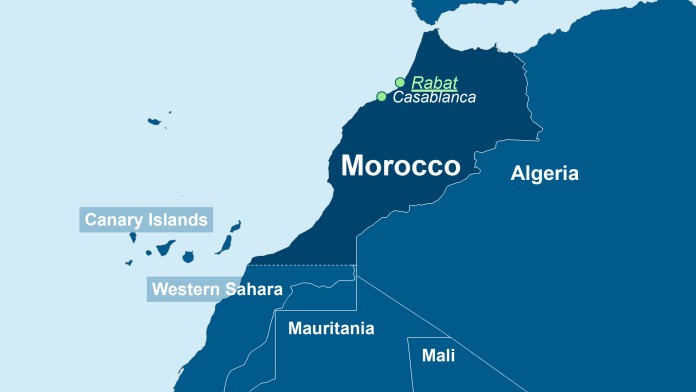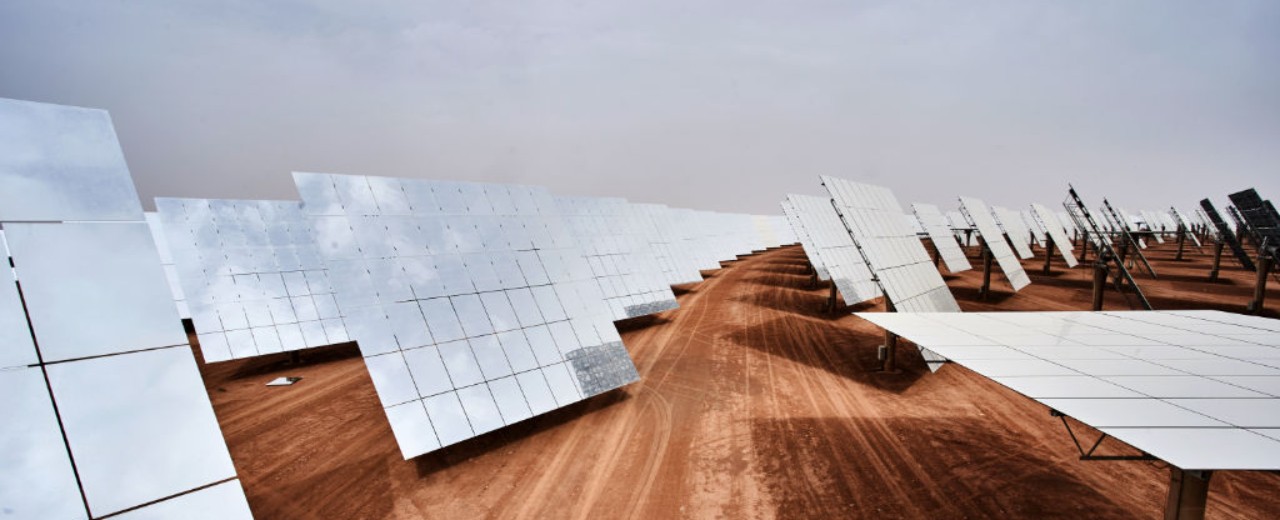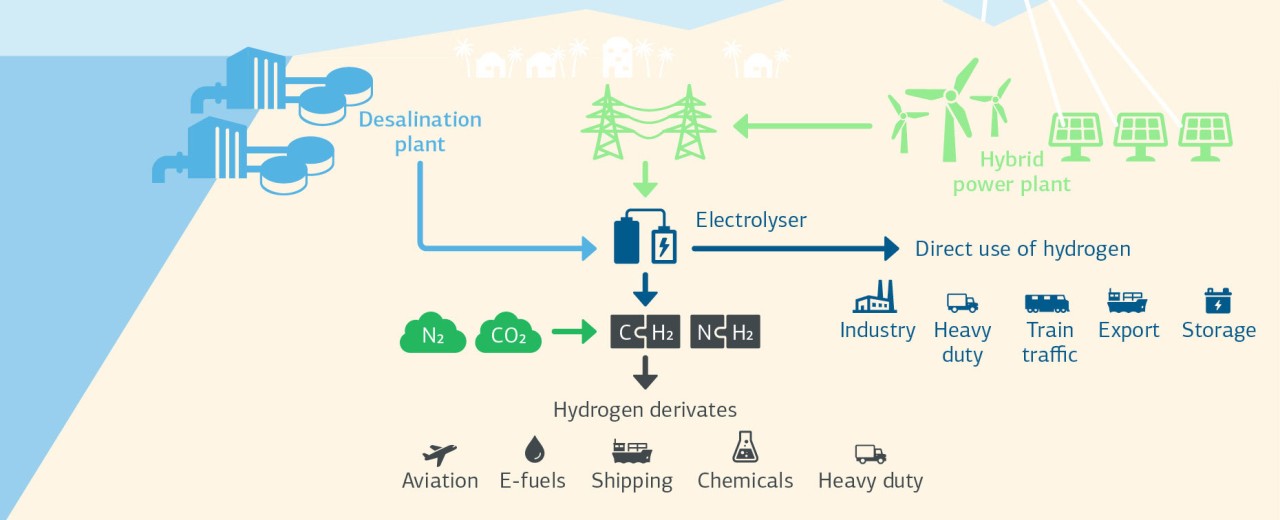
As of: 01/2024
Hydrogen is considered to be the energy source of the future because it does not generate greenhouse gases when used. However, its production requires a lot of energy, although this can be achieved in a climate-friendly way, as a new reference plant in Morocco is expected to show. It uses the country’s abundant wind and solar energy. On behalf of the German Federal Government, KfW is supporting Morocco in building this reference plant to the south of Agadir. The “green hydrogen” produced there is intended to help meet the country’s growing demand for energy and enable it to achieve its climate targets. The plant will be the first of its kind in Africa. It will also show that it is possible to produce hydrogen on a large scale in a cost-covering manner.
Morocco’s need for energy is increasing due to its growing population and increasing industrialization. However, the country has no fossil fuels of its own, so it is dependent on expensive imports. At the same time, however, Morocco has great potential for renewable energy sources. There is enough wind and sun for large-scale use. Morocco is therefore counting on these energy sources for its planned energy transition. Part of the strategy is to use wind and solar energy to generate green hydrogen. Hydrogen is considered to be the energy source of the future. Since hydrogen is gaseous, it can be transported like fossil natural gas and used similarly in many cases. One way to produce hydrogen is by using electrolysis to split water into hydrogen and oxygen. The procedure requires large amounts of electricity. If hydrogen is to be "green", this electricity must come from renewable sources of energy, which are abundant in Morocco. However, large-scale production has not yet been tested. A new plant in Morocco is now to serve as a reference plant.

On behalf of the Federal Ministry for Economic Cooperation and Development, KfW is providing up to EUR 300 million in the form of grants and loans to support the building of the reference plant in the Moroccan province of Guelmim. The plant consists of several components – solar panels are being erected on a high plateau in Guelmim Province and wind turbines are being built on the mountain ridge that borders the plateau. The electricity from these wind turbines and solar power systems is routed to the port of Tantan. This is around 50 kilometres away and a desalination plant is being built there. The freshwater produced at this plant is fed into an electrolyser and then split into oxygen and the desired hydrogen.
Both the desalination plant and the electrolysis plant require large amounts of electricity, which will come from Guelmim. In this way, green hydrogen will be produced using renewables. The reference plant is scheduled to go into operation in 2026. The aim is to support the energy transition in Morocco. The green hydrogen can also be exported from the Atlantic port of Tantan. The project is being implemented by the state-owned agency MASEN. The experience gained from this first plant, which will produce green hydrogen on an industrial scale, will be passed on for use in training and research.
The project will be implemented in the form of a public-private partnership. MASEN will develop the site and take over the coordination. Private companies and investors will set up the actual systems. In this way, they will gain experience in the technology without taking a major risk. This procedure has proven itself internationally for large-scale projects. MASEN has also been successful in its implementation of the ongoing and completed solar and wind projects financed by KfW on behalf of the German Federal Government.

The hybrid solar and wind power plant has the potential to produce 200 MW. The electrolyser will have the capacity to produce at least 100 MW. This means that at least 10,000 tonnes of hydrogen can be produced per year.
The large-scale project is the first project arising from the hydrogen partnership concluded between Morocco and Germany in 2020. It will help Morocco and Germany to achieve their climate targets. It also supports "Power-to-X" (PtX) technology, which, with the help of green hydrogen, could play a part in reducing emissions in the future. The reference plant will show that it is possible to produce this green hydrogen on a large scale and cost-effectively.
The project contributes to the achievement of these following United Nations Sustainable Development Goals:
KfW Group
KfW Development Bank
KfW Office Rabat
Share page
To share the content of this page with your network, click on one of the icons below.
Note on data protection: When you share content, your personal data is transferred to the selected network.
Data protection
Alternatively, you can also copy the short link: https://www.kfw-entwicklungsbank.de/s/enzBy9uy
Copy link Link copied